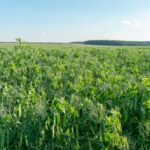Proper soil nutrition is critical for healthy crops and optimal yields. A fertilizer spreader is a valuable tool that ensures fertilizers are applied evenly and efficiently, reducing waste and enhancing soil fertility. However, to achieve the best results, it’s essential to know how to use a spreader correctly. Here’s a detailed guide for farmers and gardeners on the effective use of a fertilizer spreader.
1. Understanding Fertilizer Spreaders
Fertilizer spreaders come in two main types:
- Broadcast Spreaders: These distribute fertilizer over a wide area, making them ideal for large fields or lawns.
- Drop Spreaders: These provide more precise application, suitable for smaller areas or when accuracy is critical.
Each type has its advantages, and the choice depends on the size of your land and the type of fertilizer application needed.
2. Choose the Right Fertilizer
Before using a spreader, select a fertilizer based on your soil’s needs. Conduct a soil test to determine deficiencies in nutrients like nitrogen (N), phosphorus (P), and potassium (K).
- Granular Fertilizers: Suitable for both broadcast and drop spreaders.
- Pellet Fertilizers: Easier to handle and provide a uniform spread.
3. Calibrate the Spreader
Calibration ensures the spreader applies the correct amount of fertilizer. Incorrect calibration can lead to over-application (causing plant damage and environmental pollution) or under-application (resulting in nutrient deficiencies).
How to Calibrate:
- Refer to the Fertilizer Bag: Most bags specify the application rate (e.g., kilograms per hectare).
- Adjust the Spreader Settings: Match the spreader’s settings to the recommended rate.
- Test the Spread: Spread a small amount on a test area and measure the coverage. Adjust as needed.
4. Prepare the Area
Before spreading fertilizer:
- Remove Debris: Clear the field or garden of rocks, sticks, and weeds.
- Mow Grass or Trim Plants: For lawns or pastures, cut grass to an even height to ensure uniform fertilizer absorption.
5. Fill the Spreader Safely
- Fill the spreader on a flat, hard surface to catch any spills.
- Wear gloves to protect your skin from potential irritation.
- Avoid overfilling to prevent uneven spreading.
6. Apply Fertilizer Evenly
Proper application is critical to avoid over-fertilizing some areas and under-fertilizing others.
- Broadcast Spreaders: Walk at a consistent pace and overlap slightly with each pass to ensure even coverage.
- Drop Spreaders: Use a systematic, grid-like pattern to avoid missed spots.
Pro Tip: Start spreading at a lower setting and adjust as needed to avoid over-application.
7. Avoid Fertilizer Drift
Fertilizer drift occurs when granules are spread outside the intended area, potentially harming plants or contaminating water sources.
Tips to Avoid Drift:
- Use drop spreaders near boundaries, gardens, or water bodies.
- Avoid spreading on windy days.
- Use a shield attachment on broadcast spreaders for added precision.
8. Water After Application
Watering activates most fertilizers, helping nutrients seep into the soil.
- Light Watering: Ensures fertilizer granules dissolve without washing away.
- Timing: Avoid heavy watering or rain immediately after spreading, as it can lead to nutrient runoff.
9. Clean and Maintain the Spreader
Proper maintenance extends the life of your spreader and ensures consistent performance.
- Clean After Each Use: Rinse the spreader with water to remove fertilizer residue, which can corrode metal parts.
- Lubricate Moving Parts: Use grease or oil to keep the mechanism running smoothly.
- Store Properly: Keep the spreader in a dry, covered area to prevent rust and damage.
10. Follow Safety Guidelines
- Wear Protective Gear: Gloves, safety glasses, and a dust mask protect against exposure to fertilizer dust.
- Avoid Overlapping Too Much: Excess fertilizer can harm plants and leach into groundwater.
- Keep Fertilizer Away from Kids and Pets: Store it securely when not in use.
Benefits of Using a Fertilizer Spreader Properly
- Improved Soil Nutrition: Ensures nutrients are distributed evenly for healthier plants.
- Cost Efficiency: Reduces waste by avoiding over-application.
- Time Savings: Covers large areas quickly and effectively.
- Environmental Protection: Minimizes runoff and nutrient leaching into water sources.
A fertilizer spreader is an indispensable tool for farmers and gardeners looking to enhance soil nutrition and crop yields. By selecting the right spreader, calibrating it properly, and following best practices for application and maintenance, you can ensure your fertilizer investment pays off. For South African farmers, these practices contribute to sustainable farming while protecting the environment and boosting productivity.
Join 'Farmers Mag' WhatsApp Channel
Get the latest Farming news and tips delivered straight to your WhatsApp
CLICK HERE TO JOIN






